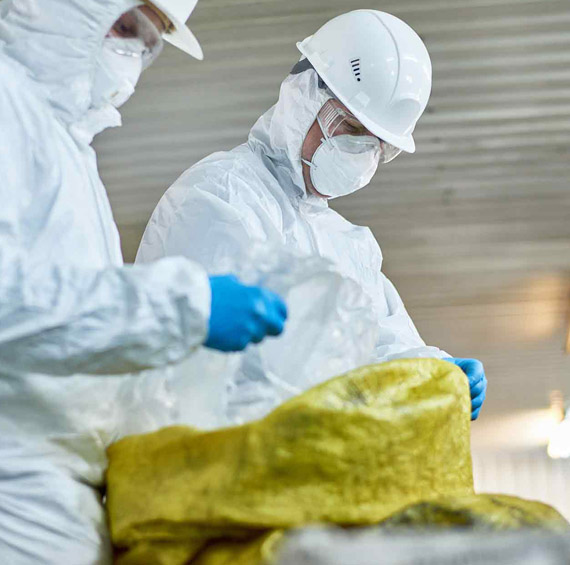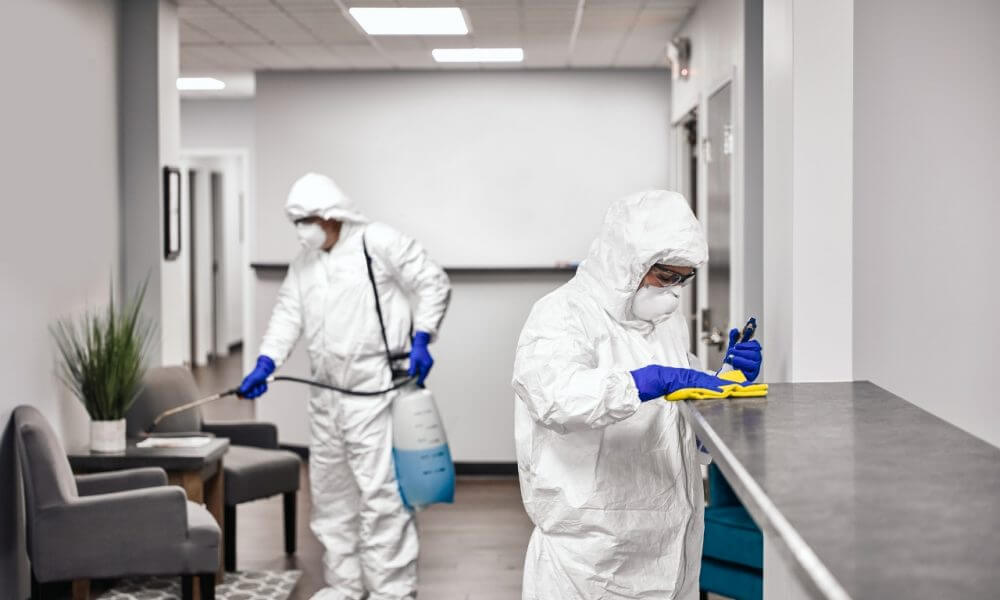Decomposition Death Clean Up: Specialized and Respectful Remediation
Decomposition Death Clean Up: Specialized and Respectful Remediation
Blog Article
Specialist Biohazard Cleaning for Crime Scenes, Injury Incidents, and Polluted Areas
In the realm of expert biohazard cleanup, careful attention to information and adherence to safety protocols are extremely important. As we dig right into the complexities of biohazard clean-up for these sensitive atmospheres, a much deeper understanding of the difficulties and vital treatments included will arise, dropping light on the essential duty of expert cleanup solutions in bring back safety and security and tranquility of mind.

Relevance of Biohazard Cleaning
Biohazard cleaning following crime scenes and trauma cases is crucial for making sure the security of people and the setting. When these cases occur, they frequently leave a selection of biohazards such as blood, physical liquids, and other possibly contagious materials. These substances can harbor unsafe virus like infections and germs, posing serious health dangers if not correctly cleaned and sanitized.
Specialist biohazard cleanup services are trained to deal with these hazardous products safely and successfully. They have the essential equipment, such as individual safety equipment and specialized cleansing representatives, to completely sanitize the affected areas. By turning over the cleanup to skilled professionals, people can prevent direct exposure to dangerous microorganisms and stop the spread of transmittable conditions.
Additionally, appropriate biohazard cleaning is vital for protecting the setting. Improper disposal of biohazardous materials can contaminate soil, water sources, and air, posturing a threat to wild animals and the environment. By following strict clean-up methods, specialists can make sure that biohazards are securely removed and taken care of in conformity with policies, lessening the danger of environmental contamination.
Kinds Of Biohazards Encountered
Numerous harmful materials frequently experienced in crime scenes and injury incidents present significant wellness threats otherwise handled properly. Blood and bodily fluids are amongst the most usual biohazards found in these circumstances. These fluids can bring pathogens such as HIV, hepatitis B and C, and other hazardous microorganisms. In addition, tissues, organs, and body components can also present major health and wellness dangers as a result of possible contamination.
An additional kind of biohazard commonly experienced is sharp things like needles, broken glass, and other products that can cause injuries and transfer infections. Chemical risks are likewise a problem, as crime scenes may contain substances like tear gas, pepper spray, or drug production products that need specific handling and disposal procedures to avoid more injury.
Moreover, mold and mildew and microorganisms development can occur precede where decomposition or long term direct exposure to wetness has taken place. These bacteria can release toxic substances and irritants into the air, positioning breathing dangers to those exposed. In general, biohazard cleaning professionals have to be qualified and well-equipped to efficiently manage these different sorts of unsafe products to ensure the security of themselves and others.
Equipment and Safety Equipment
When addressing the crucial task of dealing with biohazards experienced in criminal activity scenes and injury cases, the application of appropriate devices and protective gear is vital to guaranteeing the safety of individuals included in the clean-up process. Specialized cleaning devices like biohazard bags, sharps, and anti-bacterials containers are required for the safe collection and disposal of polluted products. Ensuring that all equipment is properly kept, routinely evaluated, and used according to safety guidelines is important in reducing the threat of exposure to biohazards during cleanup operations.
Cleaning Process and Strategies
Complete and reliable cleanup of biohazardous materials from criminal offense scenes and injury events requires meticulous focus to information and adherence to rigorous safety methods. The cleaning procedure generally includes numerous vital steps. Originally, the location has to be analyzed to determine the extent of contamination and the suitable cleansing methods needed. Next, all biohazardous products, consisting of blood, physical liquids, and tissue deposits, have to be very carefully gotten rid of and taken care of based on neighborhood this laws.
Complying with the removal of biohazardous materials, the damaged area undertakes a comprehensive cleansing and disinfection process. This action entails the use of specialized cleansing agents and devices to ensure that all traces of contamination are eliminated. After cleansing, the area is subjected to rigorous screening to confirm that it is cost-free and secure of any type of remaining biohazards.

Purification and Disposal Treatments
To make sure extensive purification and appropriate disposal of biohazardous materials, following the careful cleanup procedure, specific procedures need to be thoroughly adhered to with rigorous adherence to security procedures. Purification includes the removal or neutralization of contaminants to reduce the risk of exposure and spread of dangerous compounds. This procedure normally consists of cleaning, sanitizing, and sanitizing the damaged location using customized equipment and EPA-approved chemicals.
Once purification is completed, appropriate disposal of biohazardous products is critical to stop further contamination or damage. Biohazardous waste, such as blood-soaked materials or bodily fluids, should be very carefully gathered, packaged, and identified according to regulatory standards. ATP testing. These products are then carried to accredited centers for disposal with proper channels, making sure conformity with regional, state, and federal policies

Final Thought
In conclusion, specialist biohazard clean-up is crucial for ensuring the risk-free and reliable removal of unsafe products from crime scenes, trauma occurrences, and contaminated spaces. By utilizing specialized equipment, protective gear, and following proper cleanup procedures and methods, biohazard cleanup teams can efficiently get rid of and sanitize of biohazards, lessening the risk of exposure and injury to people and the setting.
As we delve into the ins and outs of biohazard cleaning for these sensitive settings, a deeper understanding of the obstacles and critical procedures involved will emerge, losing light on the essential duty of expert cleanup solutions in bring back security and tranquility of mind.
Expert biohazard anonymous clean-up solutions are trained to deal with these hazardous materials safely and properly. By adhering to stringent cleanup methods, professionals can make certain that biohazards are safely eliminated and disposed of in accordance with policies, reducing the danger of environmental contamination.
Overall, biohazard cleanup specialists should be well-equipped and qualified to successfully take care of these numerous kinds of unsafe materials to make sure the security of themselves and others.
When addressing the crucial job of dealing with biohazards encountered in crime scenes and trauma occurrences, the utilization of correct devices and protective equipment is extremely important to making certain the safety and security of individuals entailed in the cleaning process.
Report this page